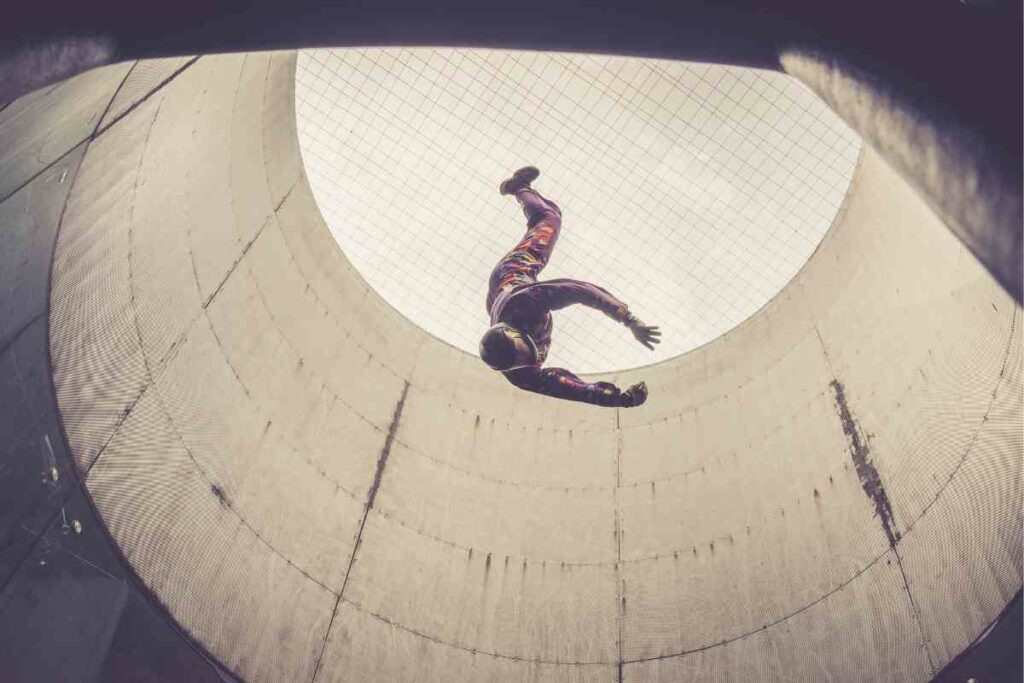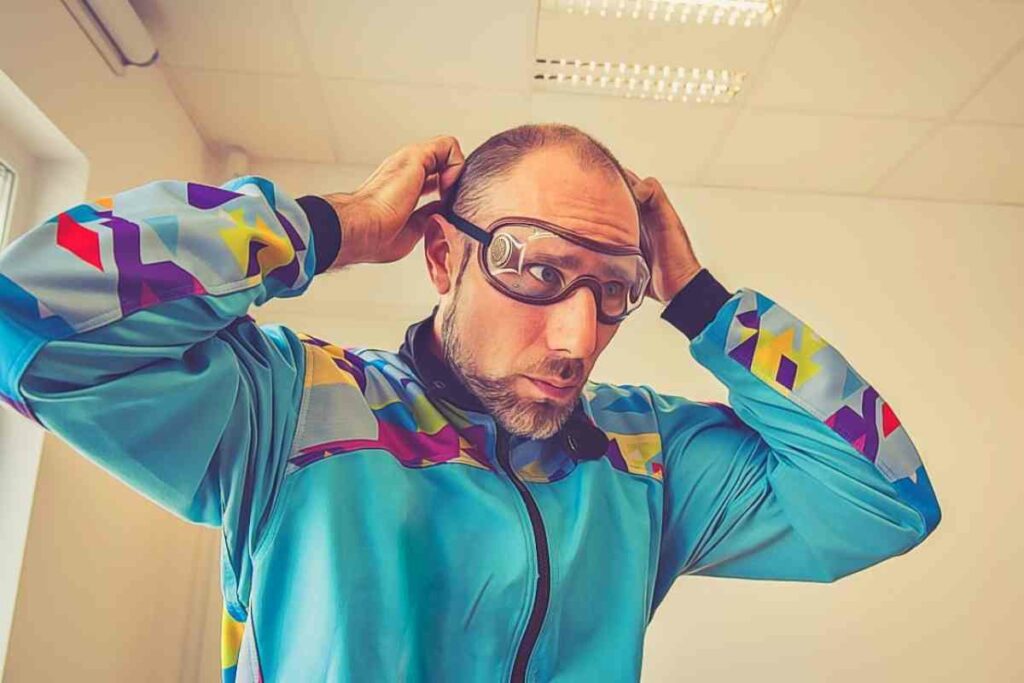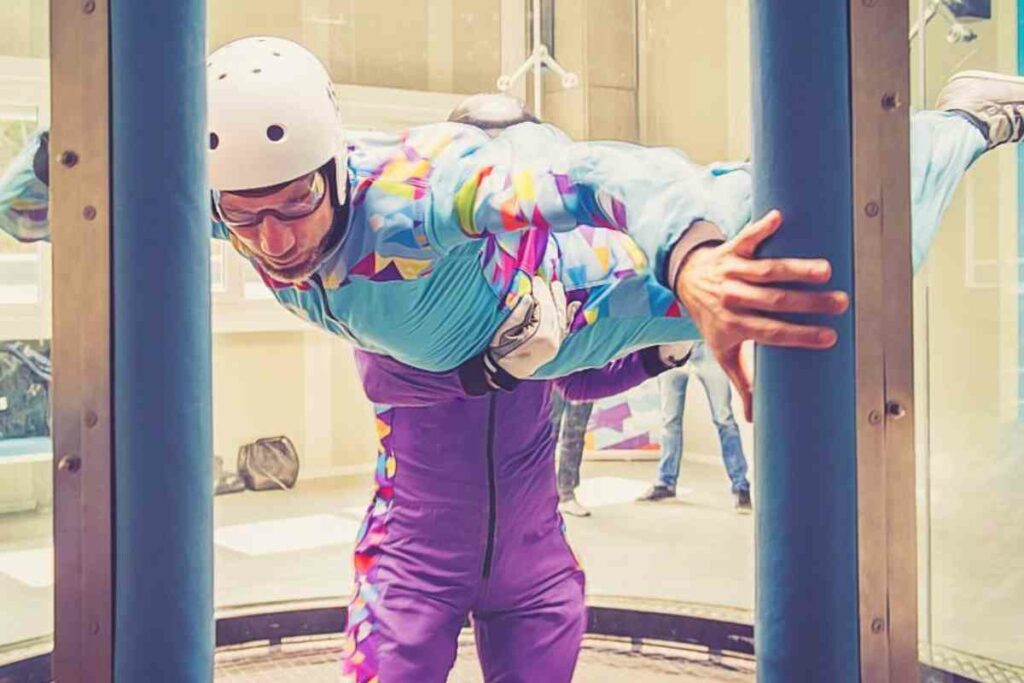Have you ever felt dizzy after a theme park ride or car trip? Motion sickness is the culprit behind these unpleasant sensations.
But can it also happen during indoor skydiving, an increasingly popular activity for thrill-seekers?
Let’s find out if this exhilarating experience comes with a side of nausea.
What Is Motion Sickness
Motion sickness is a condition characterized by a set of symptoms that include:
- Nausea
- Dizziness
- Vomiting
It is caused by a conflict between the visual and vestibular systems in the body.

The visual system interprets the motion of objects in the environment, while the vestibular system provides information about the body’s position and movement in space.
When the brain receives conflicting information from these two systems, motion sickness can occur.
Motion sickness can happen in various situations, such as traveling in a car, boat, or airplane, or when indoor skydiving.
Read before you go – Can You Indoor Skydive If You Have a Medical Condition?
Can You Get Motion Sickness From Indoor Skydiving?
Motion sickness happens when your body and brain don’t agree about what’s going on around you. It can make you feel dizzy, nauseous, or even cause vomiting.
So can indoor skydiving give you motion sickness? Well, it depends on the person. Some people are more prone to feeling motion sick than others.
If you know that rides at amusement parks or long car rides make you sick, then there’s a good chance that indoor skydiving might not be for you.
But if your body tends to handle movement well, then don’t worry! Indoor skydiving doesn’t involve any sudden drops or turns as roller coasters do.
You’ll simply float in a column of air while being supported by an instructor who will help guide and stabilize your movements.
Overall, just listen to your gut instinct before trying something new like indoor skydiving!
Preventing and Managing Motion Sickness in Indoor Skydiving
Motion sickness is a common problem that people experience when they try indoor skydiving for the first time.
Many people tend to feel queasy or dizzy due to the rapid movements and spinning sensations inside the wind tunnel.
However, there are some measures one can take to prevent motion sickness from happening during their flight.
Here are some tips.
1. Avoid consuming heavy meals before your flight
Eating large meals or foods with high-fat content can lead to discomfort and nausea, so it’s better to eat something light a few hours prior.
2. Hydrating yourself well
Dehydration enhances susceptibility to feeling sick so you should drink plenty of fluids throughout the day before your indoor-posey session starts.
3. Stand in front of a fan
Try standing near fans/air conditioners as cool air could ease down feeling nauseous when you’re inside an enclosure with limited ventilation such as an indoor skydiving chamber.
4. Keep focus by looking ahead
Motion sickness often occurs while turning around a long axis at high speed but keeping eyes fixed on where one intends to land makes this happen less frequently.
Want to dig deeper? Jump in and uncover additional insights in our Indoor Skydiving Guide for Beginners.
5. Take small breaks If needed
Taking short rest breaks between flights, and having someone talk make be helpful if afraid- reassurance goes a long way.
What To Do If You Get Motion Sickness While Indoor Skydiving
Stop and Take a Break
If you are feeling nauseous, stop immediately and take a break. Sit down for a few minutes and give your body some time to recover.
Focus on Your Breathing
Pay attention to your breathing. Taking slow deep breaths can help regulate your heart rate, calm the nerves in your stomach, and prevent vomiting.
Close Your Eyes
Closing your eyes can help with motion sickness caused by visual stimulation. It will also allow you to focus on breathing while blocking out any other visual distractions.
Avoid Eating Heavy Foods before Flying
Avoid eating heavy meals or foods that might be upsetting during indoor skydiving. This might include fatty foods, spicy food, or alcohol.
Stay Hydrated
Drink plenty of water before flying- but not so much that it makes you feel sick! Dehydration often exacerbates motion sickness symptoms, so drinking enough fluids may reduce the risk of getting motion sickness from indoor skydiving experience.
Conclusion ?
Indoor skydiving can make a person feel queasy or dizzy.
This is due to the simulated experience of freefall and air pressure changes that affect some people more than others.
However, these unpleasant sensations are short-lived and usually subside quickly once the activity is over.







